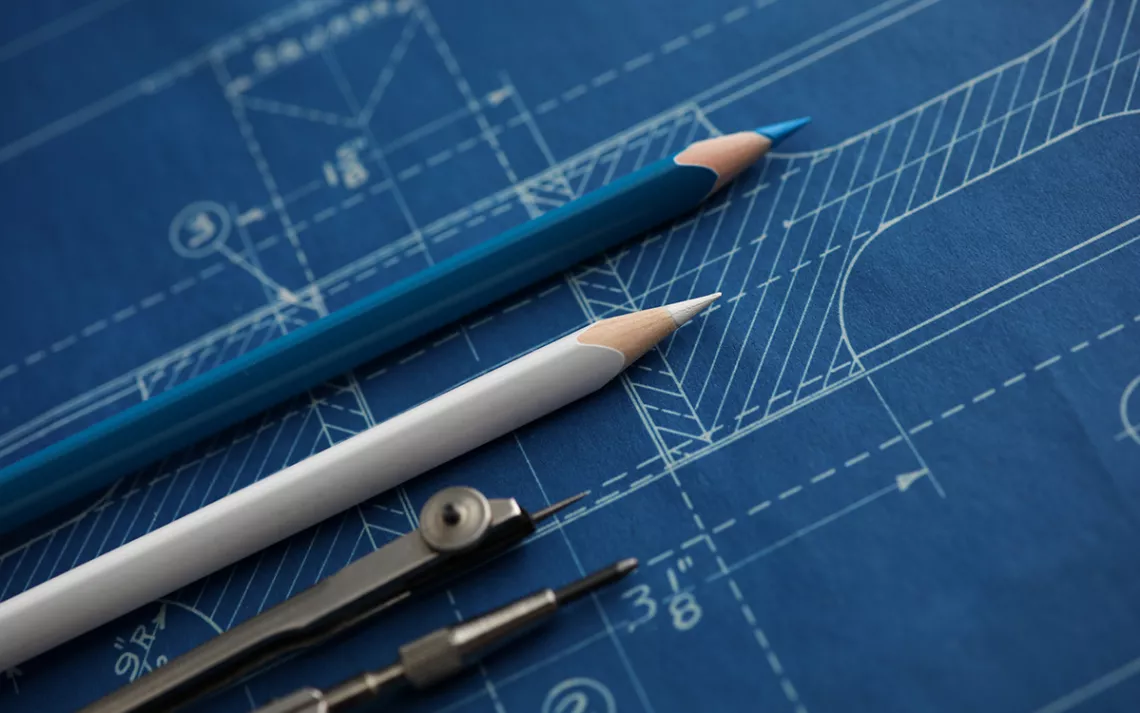Architect Portfolio Tips for Getting Noticed in the Industry
Architect Portfolio Tips for Getting Noticed in the Industry
Blog Article
Understanding the Diverse Occupation Paths Available for Aspiring Architect
As an ambitious Architect, you have a world of career courses waiting for you. Each path uses unique difficulties and opportunities to apply your imagination and technical know-how. Whether you're drawn to standard style or the nuances of sustainable layout, there's a specific niche that straightens with your interests. Understanding these diverse options can shape your professional trip, but which direction will you select to explore first?
Standard Design: Creating Structures and buildings
Conventional style focuses on making structures and frameworks that blend functionality with visual charm. Your layouts can show social heritage, showcasing local customs while fulfilling modern-day demands.
You'll develop skills in preparing, model-making, and site evaluation, permitting you to imagine and interact your ideas efficiently. Involving with clients, you'll require to understand their vision and convert it into possible layouts.
Furthermore, developing codes and sustainability practices are crucial in your job, ensuring your structures are environmentally friendly and secure. As you expand in your career, you'll discover chances in property, business, and even repair tasks, each offering special challenges. Accepting conventional architecture leads the way for a meeting occupation that admires the past while shaping the future.
Urban Planning: Shaping Areas and Public Spaces
As an ambitious Architect, you can play a crucial duty as a city coordinator, changing exactly how neighborhoods work and engage. By employing community engagement techniques, you'll guarantee that locals have a voice fit their environment. And also, integrating sustainable design concepts will help develop rooms that not only meet today's demands however likewise secure the future.
Function of Urban Planners
While numerous may assume of architects as the single dreamers behind structures, city planners play an essential duty fit the wider landscape of communities and public spaces. They analyze land usage, zoning legislations, and neighborhood requires to develop lasting settings that boost lifestyle. By working together with different stakeholders, you'll help make parks, transportation systems, and household areas that promote social interaction and accessibility. Urban coordinators likewise focus on ecological factors to consider, making sure that advancements integrate green spaces and assistance biodiversity. Your proficiency in spatial style and area characteristics permits you to imagine future development while maintaining social heritage. In this important duty, you'll straight affect how people experience their environments, making every project a possibility for favorable modification.
Area Interaction Methods
Efficient community engagement approaches are vital for urban planners to ensure that the voices of residents are heard and valued in the planning process. To foster meaningful discussion, you ought to prioritize open online forums and workshops where area members can express their ideas and worries. By actively listening and including responses, you'll develop rooms that show the neighborhood's requirements, eventually leading to more lasting and successful city environments.
Sustainable Style Principles
When creating urban areas, incorporating sustainable style principles is crucial for developing settings that thrive both environmentally and socially. You should start by concentrating on energy effectiveness, making use of materials that lower waste and advertise recycling. Consider integrating green spaces, like gardens and parks, to improve biodiversity and improve air top quality. Promoting walkability and public transport can decrease reliance on vehicles, promoting a much healthier neighborhood.
Designing with water preservation in mind is likewise essential-- assume regarding rain yards and absorptive surfaces to manage stormwater. Involving area participants throughout the planning procedure warranties that the areas you develop fulfill their requirements and urge social interaction. By accepting these concepts, you'll add to dynamic, sustainable metropolitan landscapes that profit everybody.

Landscape Architecture: Creating Lasting Outside Atmospheres
As you explore landscape design, you'll uncover necessary design principles that create gorgeous and functional exterior spaces. Sustainable techniques play a crucial role in guaranteeing these settings prosper while reducing ecological influence. And also, you'll locate a range of job opportunities that permit you to make an actual distinction in exactly how individuals engage with nature.
Style Concepts in Landscape
Understanding design principles in landscape architecture is necessary for creating lasting exterior atmospheres that integrate with nature. You'll need to ponder components like percentage, scale, and equilibrium to ensure your layouts feel natural and welcoming. Incorporating indigenous plants not just improves biodiversity however also decreases water use, making your landscape resilient. Consider the flow of space and exactly how individuals connect with it; pathways and seating areas should invite expedition and relaxation. Furthermore, focus on seasonal adjustments, developing with products that complement the surroundings year-round (Architect). By prioritizing sustainability and visual appeals, you can develop outdoor spaces that enhance the neighborhood and advertise wellness. Accepting these principles will certainly establish a solid structure for your profession in landscape architecture.
Sustainable Practices Review
Lasting methods in landscape style not only concentrate on visual appeals however likewise focus on ecological wellness and resource conservation. By integrating native plants, you improve biodiversity and lower the requirement for chemical plant foods and chemicals. Applying efficient watering systems aids save water and reduces overflow, shielding neighboring ecological communities. You can design spaces that advertise dirt health and wellness, such as using organic products and exercising permaculture concepts. Additionally, incorporating eco-friendly infrastructure, like rainfall gardens and permeable pavements, aids in stormwater administration and reduces metropolitan heat. You add to a healthier earth and give areas that cultivate neighborhood connection when you produce exterior environments with sustainability in mind. Eventually, these methods guarantee your styles profit both people and the setting for several years to find.
Career Opportunities Expedition
With a strong structure in lasting methods, landscape style uses a variety of occupation paths that allow you to make a meaningful effect on the environment. You can function as a landscape developer, producing aesthetically pleasing and functional outdoor rooms, or concentrate on ecological restoration, assisting to restore damaged ecological communities. Urban coordinators frequently team up with landscape architects to produce green rooms in metropolitan settings, improving city livability. If you're enthusiastic about education and learning, take into consideration coming to be a landscape architecture teacher, motivating future generations. Additionally, you might work with nonprofits concentrated on ecological sustainability or take part in study to introduce new methods. Each path not only shapes stunning atmospheres however also fosters a much healthier earth for future generations.
Lasting Style: Concentrating On Eco-Friendly Practices
As you explore your job in style, embracing environment-friendly techniques can establish you apart in an affordable area. Lasting layout focuses on producing structures that lessen ecological influence while boosting occupant wellness. By integrating sustainable products, energy-efficient systems, and lasting structure methods, you'll add to a greener future.
Start by obtaining understanding of green qualifications like LEED or BREEAM, which can strengthen your credentials. Consider how all-natural light, ventilation, and thermal efficiency can optimize design. Collaborate with designers and ecological professionals to introduce services that lower waste and save sources.
Don't forget the value of community involvement-- interesting local stakeholders can motivate designs that integrate with the atmosphere. As clients significantly prioritize sustainability, your experience in eco-friendly practices will not just attract tasks however also fulfill your interest for responsible architecture. Embrace this critical aspect of the profession, and watch your profession grow.
Historical Conservation: Shielding and Recovering Social Heritage
While you start on your building trip, take into consideration the important role of historic preservation in maintaining our cultural heritage. This field concentrates on the protection and restoration of considerable buildings, sites, and structures that tell the stories of our past. By participating in historic preservation, you'll help safeguard the building heritage that forms neighborhood identity.
As a historical preservation Architect, you'll assess historical importance and assess the problem of structures. You'll work very closely with chroniclers and guardians to assure authentic restoration techniques are used. This job path allows you to mix creative thinking with research study, enabling you to develop services that appreciate original products and craftsmanship.
Your job not just contributes to sustainability by recycling existing structures however likewise fosters a sense of pride within areas. Accepting this path will help you come to be a guardian of background, protecting the stories and aesthetic appeals that improve our lives.
Inside Design: Enhancing Indoor Spaces
Historic conservation and click here interior architecture both share a commitment to improving the developed atmosphere, however they concentrate on different elements. While historical preservation highlights keeping a structure's historic and cultural worth, indoor architecture nos in on maximizing indoor spaces for capability Architect and aesthetic appeals.
As an ambitious Architect, you'll discover that indoor architecture enables you to mix imagination with technological skills. You'll make spaces that not just look good however likewise advertise convenience and effectiveness. This area entails understanding how light, color, and products engage within a space, affecting mood and use.
You'll deal with different projects, from household homes to industrial workplaces, making sure that each atmosphere meets the needs of its owners. By prioritizing individual experience, you can change interiors right into motivating and useful rooms, making a considerable effect on exactly how people connect with their surroundings. Accept the possibility to enhance indoor environments and form the method individuals live and work.
Industrial Style: Combining Functionality With Looks
Industrial design plays a crucial role in producing items that seamlessly blend visual appeals with performance, making certain that what you make use of daily is not only aesthetically attractive however likewise sensible. As an ambitious Architect, you could involve on your own in this area, concentrating on developing everything from furnishings to consumer electronics. Your job includes understanding customer requirements, materials, and making processes, permitting you to produce innovative solutions that boost daily experiences.
In industrial design, you'll usually collaborate with designers, manufacturers, and marketing experts, guaranteeing that your designs are not only lovely yet additionally viable. This job course uses a vibrant atmosphere where imagination satisfies functionality, making it a fulfilling choice for architects interested in shaping the products of tomorrow.
Often Asked Inquiries
What Educational Qualifications Do I Required to Come To Be an Engineer?
To end up being an architect, you'll require a specialist level in design, usually a Bachelor's or Master's. Additionally, you'll have to finish an internship and pass the Architect Enrollment Assessment to practice legitimately.
Exist Accreditation Requirements for Various Architectural Career Paths?
Yes, there're qualification demands for various building paths. Architect. You'll need to pass tests, total internships, and occasionally go after specialized training, depending on your picked focus, like landscape style, metropolitan design, or historical preservation
What Software Program Skills Are Essential for Architects Today?

How Can I Gain Practical Experience While Examining Style?
You can gain practical experience by interning at building firms, participating in layout competitions, volunteering for area jobs, or collaborating with schoolmates on real-world projects. These opportunities boost your skills and build beneficial links in the industry.
What Work Opportunities Exist Outside Typical Style Firms?
You can check more info out various work opportunities outside typical style companies, like metropolitan planning, indoor layout, landscape design, construction monitoring, property growth, or perhaps functions in sustainability consulting. Each offers unique difficulties and benefits.
Whether you're drawn to standard architecture or the nuances of lasting layout, there's a specific niche that aligns with your passions.When developing metropolitan rooms, including lasting design principles is vital for creating environments that prosper both environmentally and socially.As you explore landscape design, you'll find essential design principles that develop useful and beautiful outdoor areas.Comprehending layout principles in landscape style is crucial for creating sustainable outside atmospheres that balance with nature.In commercial layout, you'll often collaborate with online marketers, producers, and engineers, guaranteeing that your designs are not only beautiful but also feasible.
Report this page